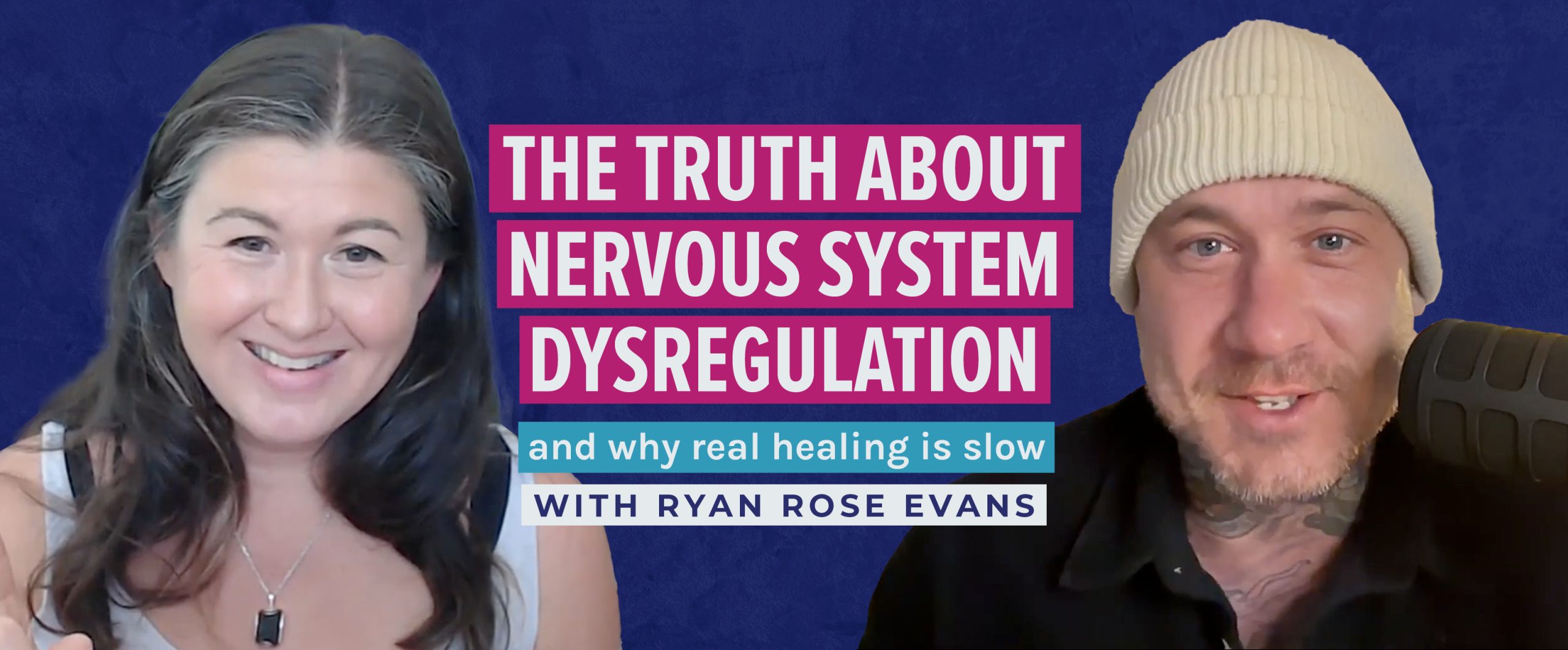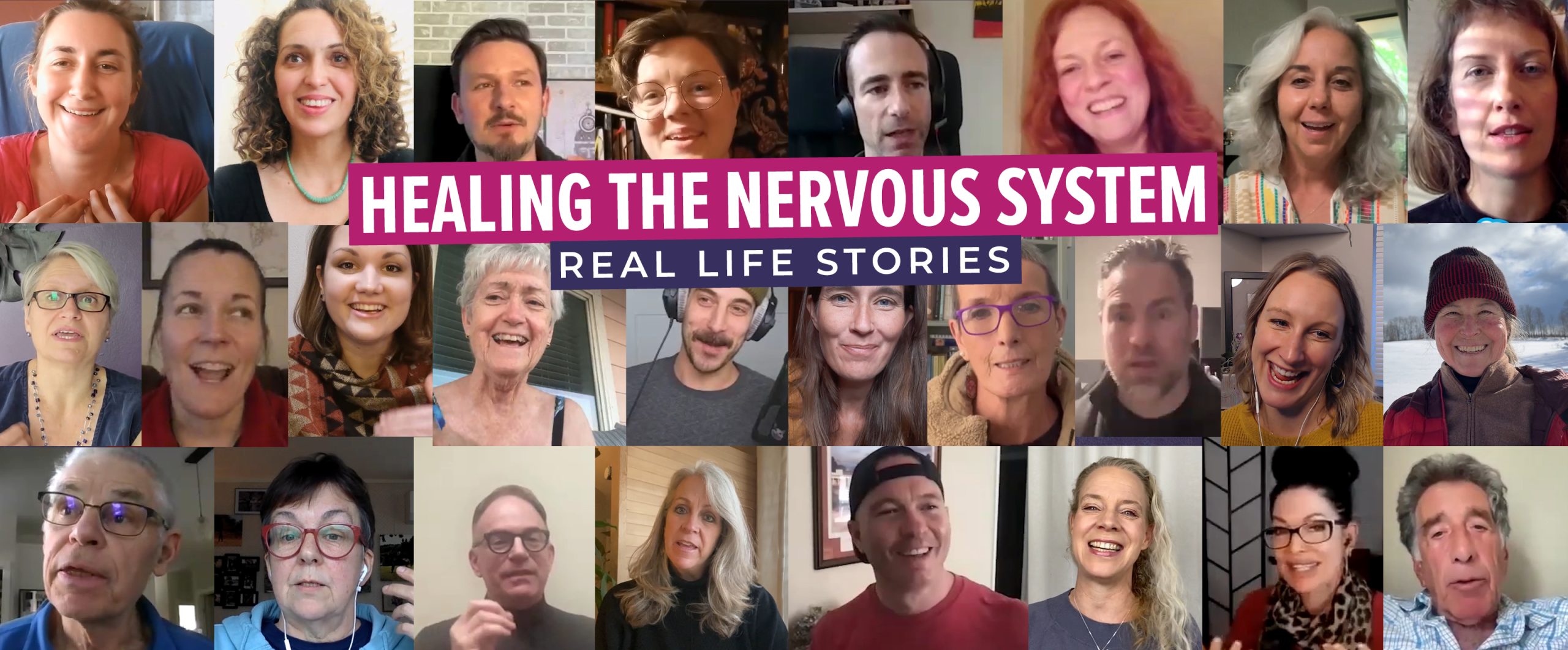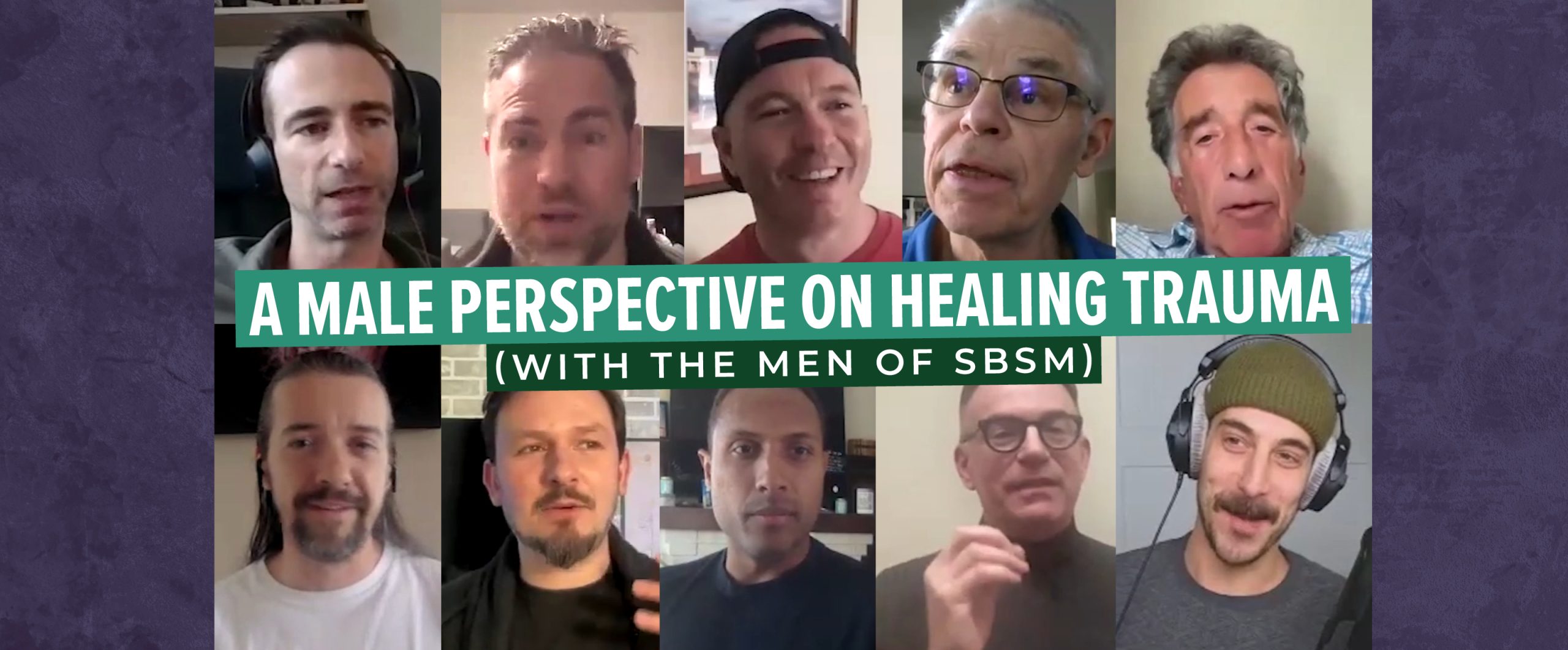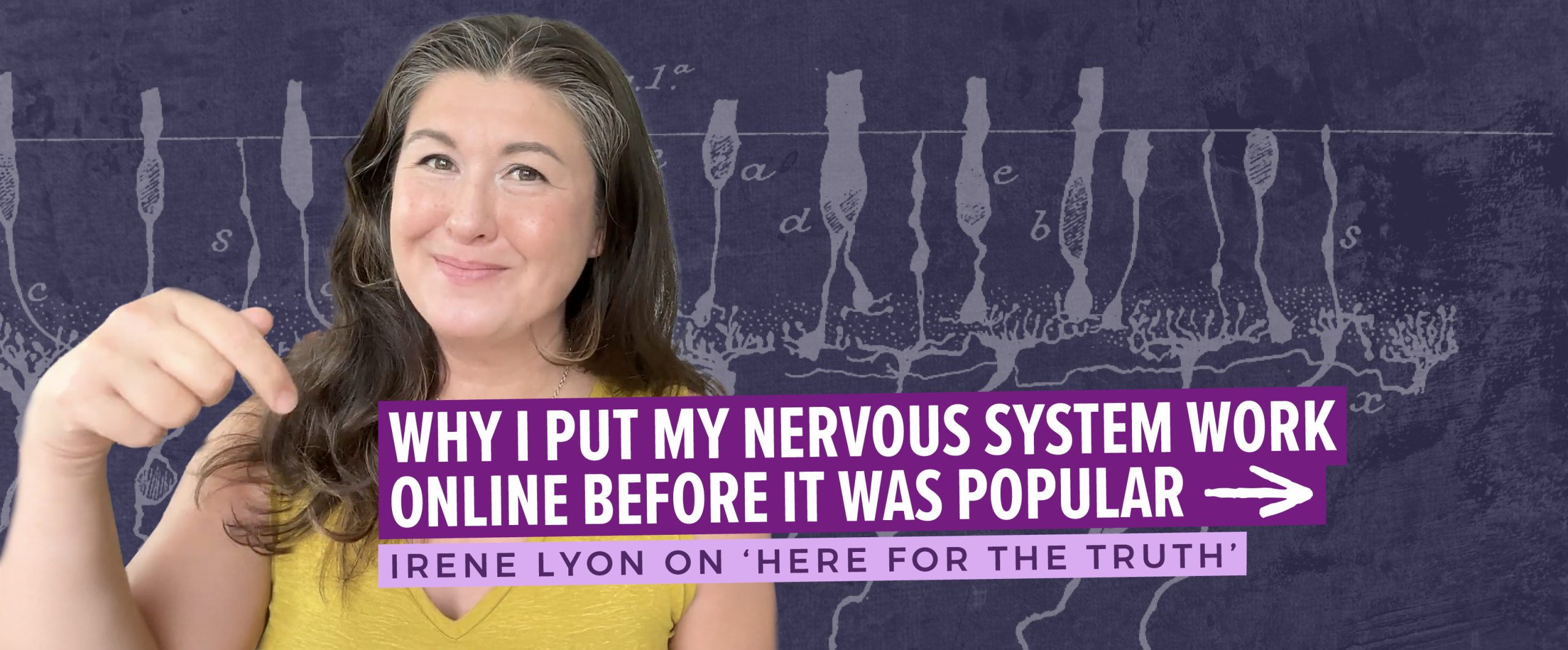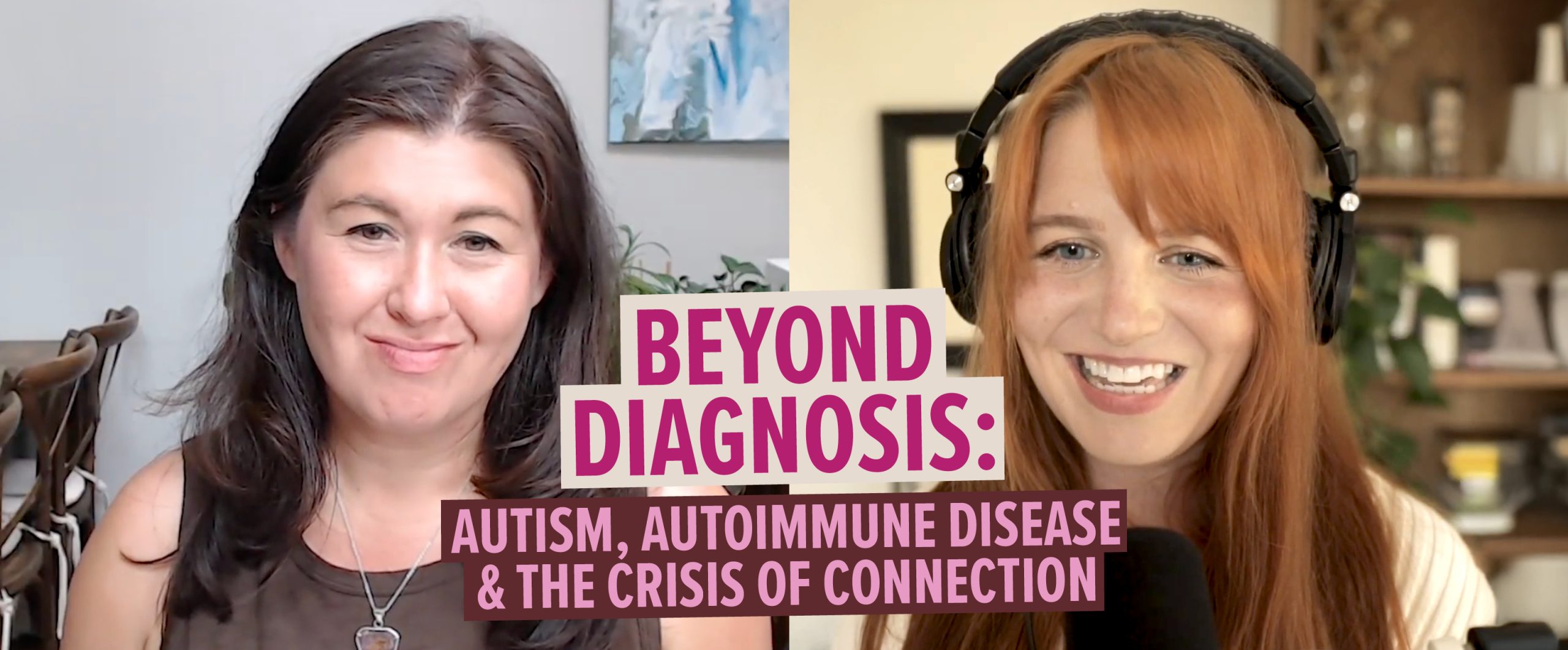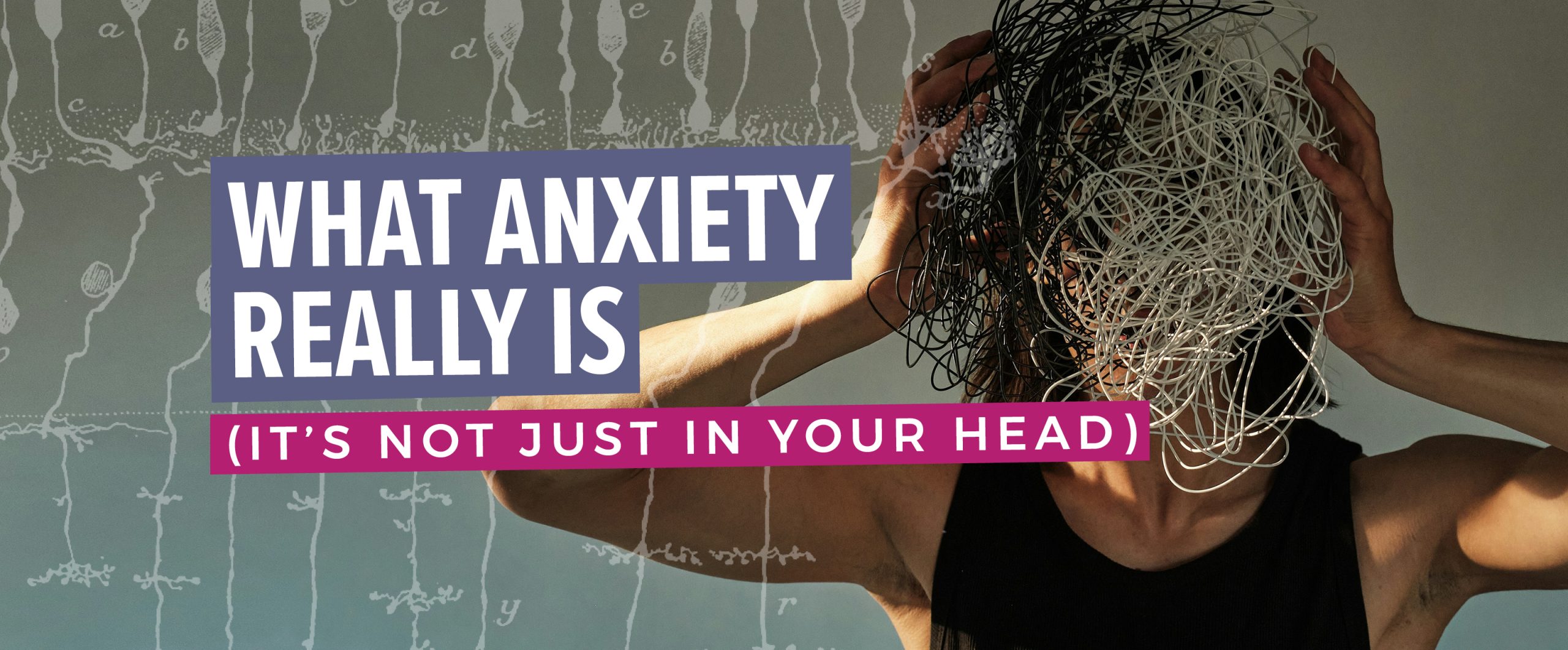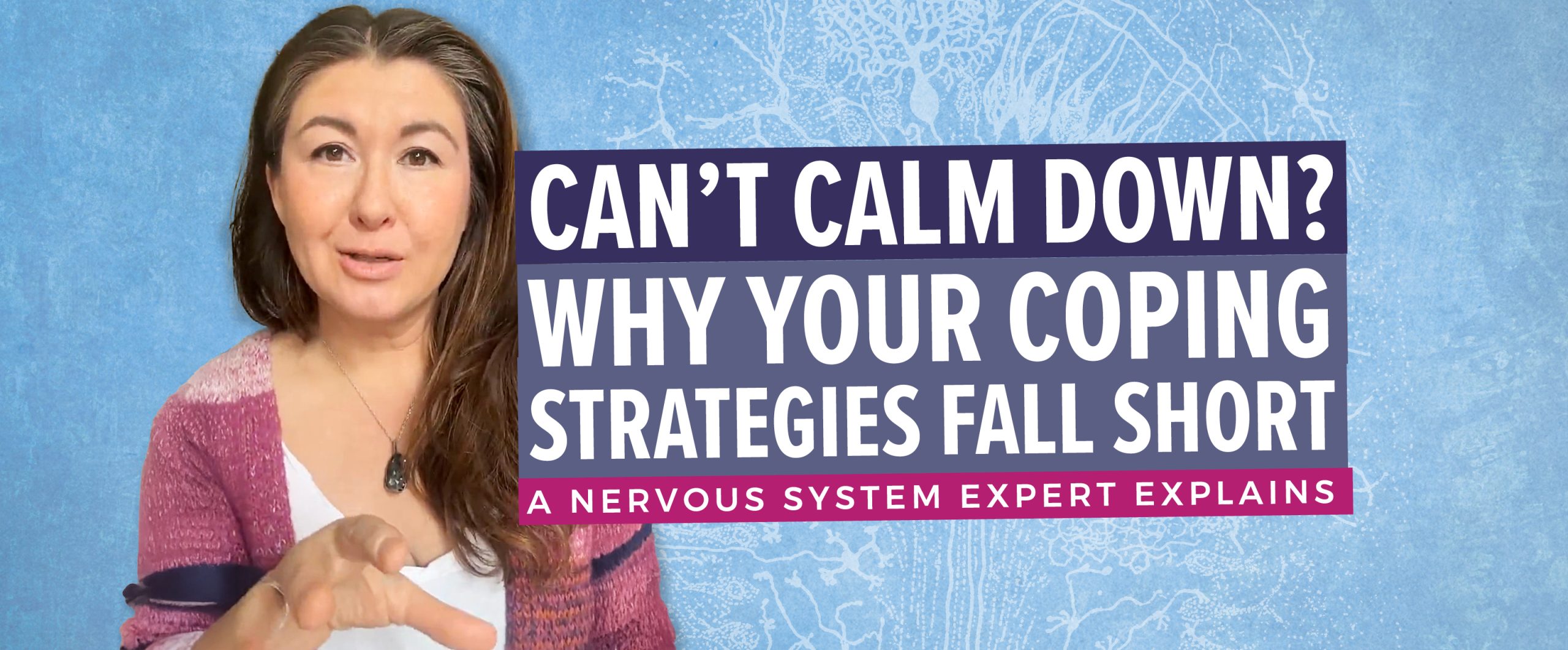What gives a mother superhuman strength to lift a car off her child?
It’s fear.
Fear, as I explain in greater detail in this article, is a biological and survival necessity. The cascade of neurochemical reactions lets us know, at lightning speed, that something is not right. Nature designed fear with speediness in mind. Thankfully that mom, or any other person in harm’s way, doesn’t think: “Danger is here, I better do something about it.” They just act, unless of course they can’t.
This inability to act. The inability to defend and protect...this is how we start to fear, fear.
To understand how we embed the biological message that fear is to be feared and that fear is supposed to be scary, it’s important to understand how early life experiences, usually traumatic ones, trap fear.
Let me explain.
A child who witnesses or experiences physical violence, who survived a childhood with minimal emotional connection (hello land of the iPad babysitter), who had to become the parent way too early to take care of their siblings (or even worse, their parent!) because mom or dad wasn’t able, or who was put through a barrage of scary medical procedures; in all these situations, a child is literally flooded with fear.
Just like the mother who can pull in all her energy reserves and strength to lift a car to save her child, a child can do the same kind of preservation effort with their survival responses to stress.
The only difference is the mom is using up the adrenalized survival energy and is acting out the response to a point of completion. But a child who can’t run away, talk back, hit, or at least attempt to defend themselves (because they are smaller and weaker), must turn that fiery fight-flee energy, inwards.
Said another way, when a child is faced with these kinds of adversities, and they are old enough to understand there’s no end in sight, the can learn that the only one way for them to withstand the chronic toxic assault to their nervous system is to shut down and bury the fear. In many ways, they become complacent and just let life happen to them, as opposed to engaging with life.*
Their smart survival mechanisms play it safe. They lay low. They don’t fuss and they keep the peace as much as they can.
But that fear doesn’t disintegrate and go away. It becomes trapped in the nervous system. This ‘holding on’ to fear is one of the main culprits behind chronic anxiety, chronic illness and debilitating nonsensical fear so many live with day in day out.
* * *
The Adverse Childhood Experiences (ACE) Study has been seminal in uncovering that the bulk of most chronic illness, as well as some cancers, heart disease and even things like anxiety, depression and other “mental” disorders (which are actually physiological disorders), are due the constant barrage of stress reactions (yes, those fear responses) firing 24/7 for years on end.
As I mentioned, when one is subjected to constant threat from an early age, there is a tendency to shut down and stop feeling. This biological shut down is nature’s way of helping the organism (in this case the child) to no longer feel the fear, as well as other tough-to-navigate sensations and emotions. In other words, the nervous system is helping preserve the sanity of the organism. But in doing this, and in staying in this state for long periods of time (as is the case with childhood abuse and adversity), it does so at the expense of health because this shutdown state is not meant to be ‘ON’ for the long term. This shutdown (freeze) state is meant to be an intermediary state.
For example, in the wild, this freeze response is beneficial because it numbs the animal, and can even put it into a stiff, frozen-like state. If you’ve ever looked up videos of ‘playing possum’ this is a classic example of a nervous system going into a freeze response due to overwhelm.
(This death-like state can serve to protect the animal because the animal preying will often become less interested in eating an animal that seems dead.)
Peter Levine, founder of Somatic Experiencing and author of Waking The Tiger – Healing Trauma, explains it this way:
“At the moment of contact (or just before), the young impala falls to the ground, surrendering to its impending death. Yet, it may be uninjured. The stone-still animal is not pretending to be dead. It has instinctively entered an altered state of consciousness shared by all mammals when death appears imminent. Many indigenous peoples view this phenomenon as a surrender of the spirit of the prey to the predator, which, in a manner of speaking, it is. Physiologists call this altered state the “immobility” or “freezing” response.”
But with chronic threat, this built-in survival response creates a bit of a design problem for us humans.
The human animal enters into a state of being ON but also OFF simultaneously: The fight and flight desires (to kill, hit, flee) are revving at a high intensity, and, because the nervous system knows darn well there is no end in sight, it simultaneously attempts to shut down the high-revving survival energy with the shutdown response.
The human system needs flow and oxygen and the moving of waste products out and good nutrition (to the cells) in. But in this ‘gas on/brake on’ scenario things go amuck internally, in the biology, and the system gets sluggish, sick, and begins to shutdown. Sure, the person is alive, but barely.
This is why there are so many chronic illnesses (both mental and physical) connected to these early adversities. They show up as signs and symptoms of lethargy, depression, no motivation, trouble focusing, weight gain, sluggish and erratic digestion, poor immune system response and to the extreme, autoimmune illnesses. The body, literally, learns to go into a survival ‘hibernation’ mode so it doesn’t have to keep mounting a fight or flight response to the constant threat.†
Fear of the more subtle variety.
Fear can also be imprinted in ways that are less seemingly traumatic, but are nevertheless important to mention. The scenario I’m about to describe happens all too often and it could very well be something that happened to you.
Many a kid falls off their bike and scrapes their knees, right? One might say it’s a childhood rite of passage (I, for one, went the full nine yards and broke my arm at age five going over my handlebars after seeing how fast I could go downhill!).
Now, if you’ve ever seen this happen, when a kid is hurt the screams come immediately. Pain is quick, just like fear, and, if the child has never felt real physical pain, it’s going to be scary. In such an event, there is a high probability that some adrenaline and other chemicals will be coursing through the blood, mounting a true stress reaction to threat.
Now, imagine this…
The kid is screaming on the pavement. Skin has been broken. There’s some blood mixed up with some gravel and dirt.
How a parent responds to this will either teach the child how to a) be with the pain and fear so they learn how to integrate it and release it, or b) they will be taught to hold it in and numb up the feelings and sensations.
As a parent, If you have any sense of empathy, there will be a VERY strong urge to rush over and scoop up your kid and hug them tightly and tell them something like “you’re ok, you’re ok! Hush, hush now, it’s ok, you’re fine”. And then you may attempt to distract them from their pain with a candy or some other form of treat or diversion.
Totally understandable.
Unfortunately though, this response will bring out result B: they will learn to numb their pain and to distract themselves from it (often with food), and they will learn that pain is something to be feared and covered up as soon as possible. Not good for the organism.
If, however, the parent has this education, if they know what you are learning right now, they can do something else.
They can just calmly go and be with the child where they are. I know it seems counter-intuitive, but the correct response is not to scoop them up and try and make it better. The correct response is to simply be with them, maybe just touching them, or holding them if they crawl into your lap but otherwise not invading their space, staying calm, and validating their experience, “Wow, that was a big fall there, huh?”, “That must have been scary!”, etc.
If the parent is calmly present and inquisitive, instead of freaking out and trying to stop the experience as soon as possible, the result is option A: the child will learn a valuable lesson in the body’s ability to mount a stress response, and then come out of that response naturally.
Obviously, if there is severe injury, an ambulance should be called as well, but the rest of these principles still hold true and will promote much greater healing after the fact.
When we fail to allow our child’s, or our own, stress reaction to naturally come down, not only does this lessen the immune system’s ability to take care of the injury (even a small skin wound still needs an immune system response!), but we are more likely to fall off our bike again, or be clumsy for the rest of the day, or get in another kind of accident, be grumpy, or be unable to do our homework, because our stress reaction is still humming inside of us and is limiting our access to the higher brain.
While one might think this latter example of falling off of a bike can’t measure up to a kid that has been abused physically or had absent, disconnected parents, think again.
After all, a parent is literally God to a child, so “if mommy says I’m fine, well I guess I am (but, why does it hurt so much?)” is a classic way for a youngster to begin their mind-body journey: feeling something that isn’t nice, then immediately dismissing it and bracing against the pain, fear, emotion, scary thought etc., so they can be accepted in the family system.
Remember: for young kids it all comes down to survival and staying in the family system, even when that family system might be detrimental to their health. So, if suppressing a body quality (emotions, pain, sensation, fear etc.) means that mom will be more patient and loving with them, then they will suppress and suppress for eternity.
By the way, we can parallel this bike fall scenario with monsters under the bed, a scary dark room with bogeymen in the closet, a visit to the dentist office, a shitty summer camp where there was no escape, etc.
The ‘nothing is wrong with you’ type of dialogue never teaches a kid how to handle something that is tough and scary. And perhaps the reason this gets passed down for generations is because the adult parent herself was never acknowledged or believed when she was scared of monsters in the closet.
If I bring this back to the main thesis of this article, “For us to heal, we must be willing to not fear, fear”, it comes down to asking ourselves this question:
“What stopped us from feeling fear in the first place?”
Everyone will have their own version of why. I believe it is important for a person to uncover some elements of this so they can intelligently address what is real current-day fear compared to what is old fear trying to find its exit path.
I mean, if your kid is trapped under a car and their life is at risk, I sure hope your fear and the cascading responses of adrenaline and action can be implemented immediately (yes please!).
But, if your system is being set off by old fear patterns, putting you into fight/flight and/or freeze responses that have nothing to do with your current life, then it is important to work on those and help them neutralize so your body isn’t continually working overtime.
It is important to remember that if we weren’t apprenticed during our infancy, childhood and adolescence on how to BE with the many feelings of fears, and the bodily sensations that come with, then there won’t be a hardwired pattern of good, healthy fear response, wherein our system goes into a fight/flight response and then comes out of it quickly.
Instead, we will get stuck in a loop of fight, flight, and...if our early time on this earth was more adverse and unsafe, we’ll get stuck in that freeze (shut down) pattern which leads to a unique form of biological chaos that (typically) leads us to the side-effects of fear gone sideways: ill health and a whole lot of suffering and stuckness.
There is a saying, ‘what we resist persists.’
When we continue to resist fear, we fail to heal.
But if we meet it, feel it, and see it as simply a pattern that is looking to release, then, we might find that healing we’ve been looking for.
* * *
Join the conversation over on my Facebook Group, Healthy Nervous System Revolution, or if you have a personal note for Irene and her team you can always send it via email via out Contact Page.
* * *
Footnotes
* For infants who actually can’t see the end in sight, meaning they don’t have the cognition to know they are screwed and the world they were brought in to is not ideal, all they have is feeling and bodily sensations. They are 100% feeling beings who register all the goodness and evil that is around them. If they are subjected to abuse, adversity, surgeries and other traumatic high-stress situations, because there is no verbal or cognitive processing occurring in conjunction with the sense of threat, danger, helplessness, their fear responses when older, are typically non-cognitive and are purely physiologically based. Meaning, that person who has no memory of any trauma, yet they are overtaken by severe flashes of fear in childhood and up, things like panic, anxiety, high heart rate for no reason etc...it is often the case that these out-of-the-blue reactions are trapped somatic ‘fear’ responses trying to come out and resolve. The trouble we have right now is there isn’t enough education on these somatically held trauma (fear) responses so there are many out there having such ‘attacks’ and medicating them, when in fact it is the body trying to heal and release stored up survival energy from long ago.
† There is a common knowing in the somatic therapeutic worlds of something called Functional Freeze. A person may seem ‘fine’ and ‘look calm’, and even portray a creepy sense of being very zen’d out on the outside, while on the inside all systems are in a constant cycling mode of fight-flight-freeze survival energy.
Book Reference
Waking The Tiger – Healing Trauma. Peter Levine, 1997


